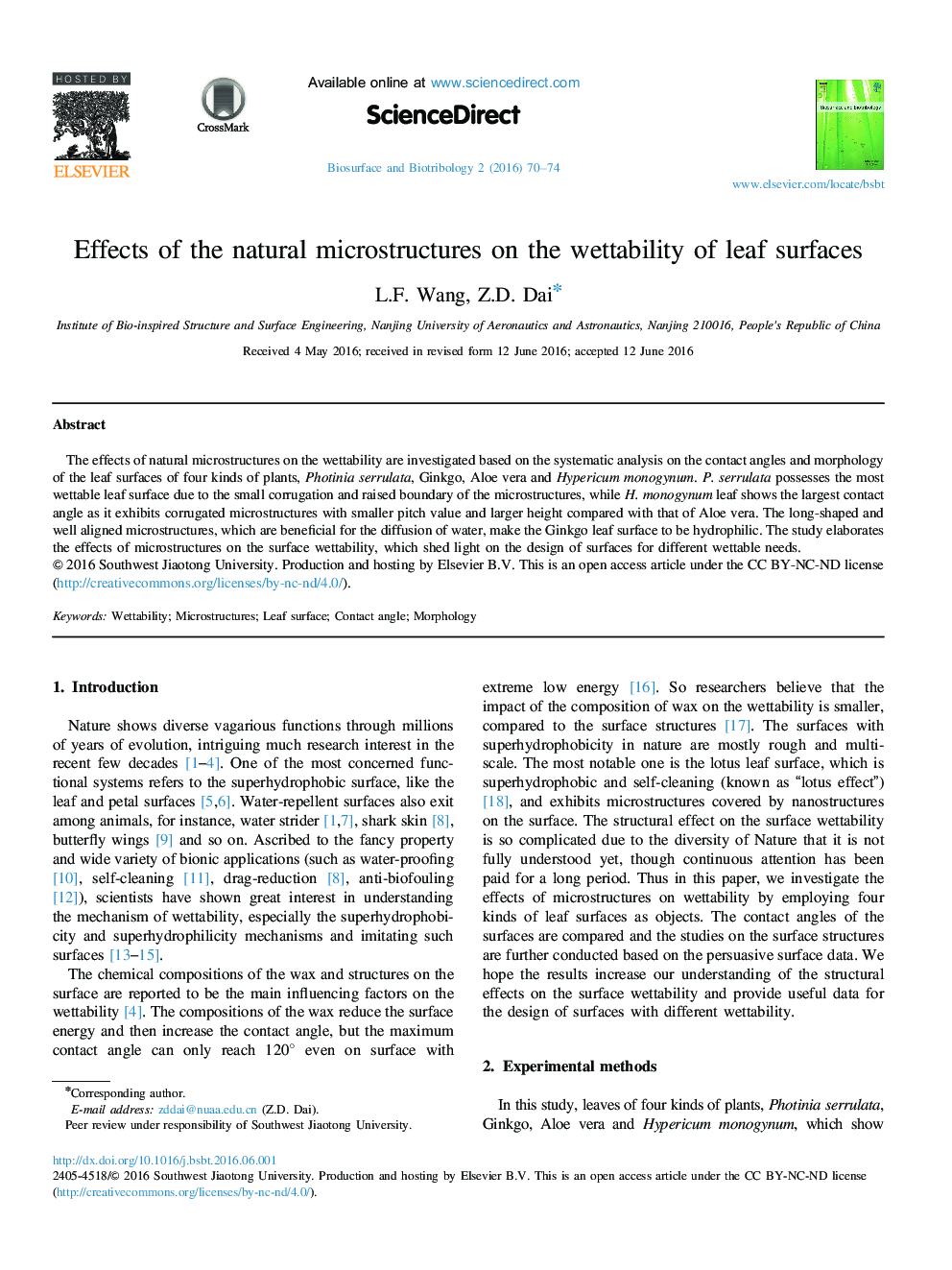| Article ID | Journal | Published Year | Pages | File Type |
|---|---|---|---|---|
| 755681 | Biosurface and Biotribology | 2016 | 5 Pages |
The effects of natural microstructures on the wettability are investigated based on the systematic analysis on the contact angles and morphology of the leaf surfaces of four kinds of plants, Photinia serrulata, Ginkgo, Aloe vera and Hypericum monogynum. P. serrulata possesses the most wettable leaf surface due to the small corrugation and raised boundary of the microstructures, while H. monogynum leaf shows the largest contact angle as it exhibits corrugated microstructures with smaller pitch value and larger height compared with that of Aloe vera. The long-shaped and well aligned microstructures, which are beneficial for the diffusion of water, make the Ginkgo leaf surface to be hydrophilic. The study elaborates the effects of microstructures on the surface wettability, which shed light on the design of surfaces for different wettable needs.
